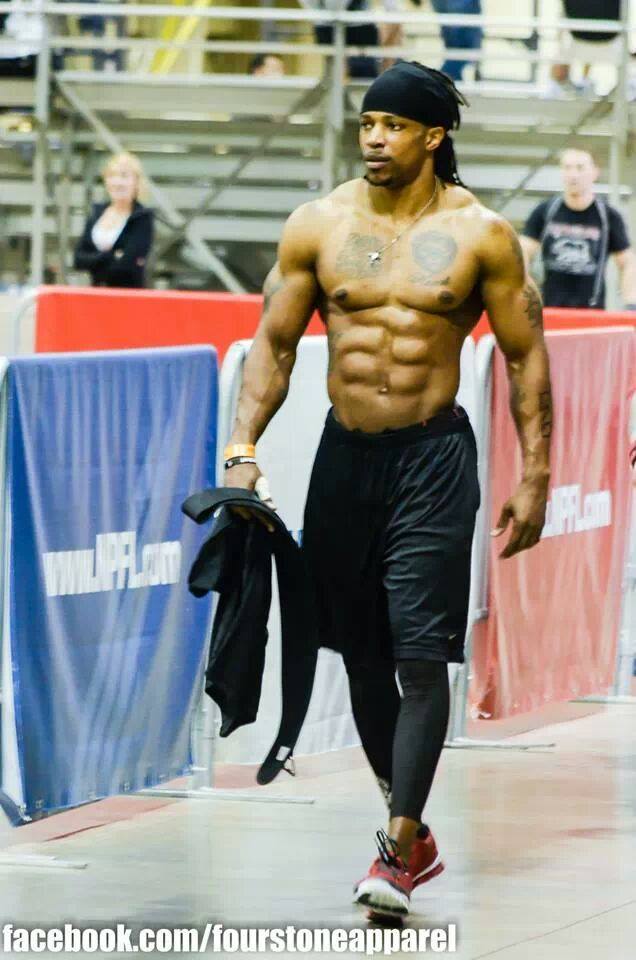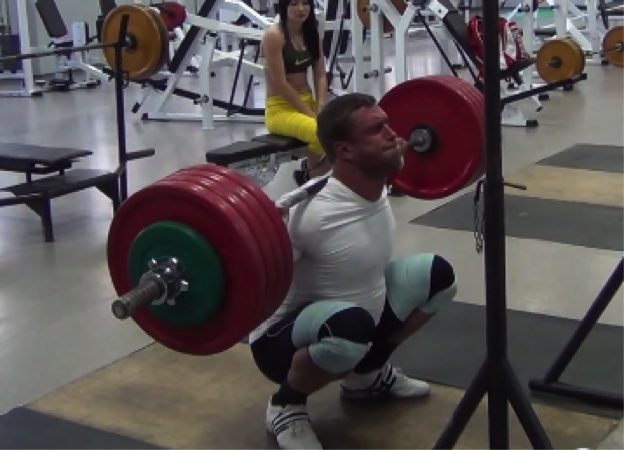Written by James Hoffman
I have had the recent pleasure of working with more and more CrossFit folks as of late. Man, they great clients! They are hardworking, dedicated, and meticulously follow their programs. Unfortunately, what I have found is that they tend to sabotage themselves a bit, either knowingly or unknowingly (I’m guessing the latter). These mistakes usually come from being a bit too ambitious with their approach to training, and not focusing on getting the basics down. The good news is these are easy to address! This is not meant to be a slight in any way, shape, or form on CrossFit or its athletes, but rather meant to genuinely help out those who are just starting out and falling in love with the sport. Here are some tips that could help you step up your competitiveness:
-
Stop training so dang much!
It’s not unusual for some clients to report upwards of 8-9 training sessions per week! Yikes! This basically boils down into two main problems:
-
Your sessions are likely of an insufficient duration, volume, and/or intensity to really drive fitness adaptations like strength and power. Training sessions should be hard enough to warrant appropriate doses of recovery between sessions. For most beginning CrossFit athletes who are new to strength training, any type of weight training sessions, despite these insufficiencies, will generally yield positive results for a while. Down the road, once they have developed strength and technique, this will slowly begin to squander their gains and crush their progress.
-
Your sessions are of sufficient duration, volume, and/or intensity and you are simply training too much. The training principles of stimulus-recovery-adaptation and fatigue management may be the most important principles for the sport of CrossFit. You cannot improve fitness characteristics without taking a break from time to time in order to allow your body to recover and make positive adaptations. As you start off in your athletic career, you must ramp up your training slowly over time. Once you have significantly improved your training status, you will be able to tolerate and benefit from more voluminous training. This, however, is not a quick process, and for many individuals takes years to build up a solid foundation of work capacity and strength.
More is not necessarily better. If you can train upwards of 8-9 times per week, it’s likely you are under training more often than not. This under training is an issue of quality, not quantity, so take your time! Spend more time under a barbell getting bigger and stronger, and it will pay out massively in the long run. For most folks, training 4-6 times per week is probably more appropriate than 8-9.
-
Stop competing so dang much!
I know competing is awesome and fun! It’s social, it can be a great bonding experience for teammates, and it marks your competitive progress.
Unfortunately, what happens is that the beginner CrossFit athlete is pushed into training for competitions without having the physical or technical preparedness for some of the advanced evaluation criteria (i.e., cleans, snatches, gymnastic movements etc.). Remember, you are new, and that’s perfectly ok! You shouldn’t be able to clean and jerk your bodyweight yet, or swim at the front of the pack. These things take a great deal of physical and technical preparation, which just takes time and practice.
Although you may see short-term benefits while practicing with sub-optimal technique, it is likely that you will reach a physical or technical ceiling where improvements can no longer be made without a corresponding improvement in technique. Don’t rush into competitions. Spend plenty of time developing strength, endurance, and learning the basic techniques of all the movements you need to be successful. Spend more time training for fewer competitions, compete in only those that are meaningful to you, and only peak a couple times per year.
Peaking is great for competitions, but it also takes valuable time away from training. Think of how much better you could be if you spent 4-6 months at a time preparing for competitions rather than competing every month. Think of how much stronger you would come in, how much better your technique would be, and how much longer you could last if you spent that much time preparing… Yeah, give it some thought.
-
Diet alone will not make you that much better (in the short term).
One of the issues I hear a lot is “I’ve hit a plateau, and I want to get my nutrition better so I can be stronger”. Yes, nutrition is massively important, especially in the sport of CrossFit; HOWEVER, it alone will not change you into the ass-kicking machine you want to be by itself.
The training and diet simply must complement each other for maximal physical preparedness.
The truth is that improving one’s diet will not have a large impact in the short term, but can provide a massive improvement over the course of months and years. Getting your nutrition in order will allow you to train harder, recover more effectively, and improve your body composition. However, this must be accompanied by the appropriate training stimulus.
What does this mean?
If you want to be stronger or more powerful, you will also need to spend less time doing WODs and spend more time underneath a barbell moving some heavy weights around in order for the diet to be maximally beneficial.

-
Stop turning the bar over so dang much!
The sport of weightlifting is really awesome, and CrossFit has brought so much attention to it over the last few years. What we have to remember is that for our weightlifting movements, technique will generally be the limiting factor. Instead of jumping into the full movements and practicing them constantly (and possibly incorrectly), start slow and learn the derivative movements.
Not only are the derivative movements used for mechanical understanding of the lifts, but they are constantly used in athletic development due to their ease of implementation and the much heavier training loads that can be used. I have personally watched Division I Women’s Soccer players, who can only clean around 80-95 lbs, but perform mid-thigh pulls from pins in the low to mid 200 lbs. Additionally, the benchmark of any good weightlifting program is some good old gnarly strength training. Ask a weightlifter how often throughout the year they do squat or deadlift variations, and you will find that in addition to the technical training, they get stronger by performing basic compound lifts all the time.
The weightlifting movements are fantastic movements to learn for training and competition obviously, but spend time getting stronger and learning the proper technique and feel for each exercise. Contrary to popular belief, these things cannot be mastered in a matter of weeks. Be patient and take the time to learn the basics before jumping into the full movements.

-
Use inductive reasoning
Unfortunately there is a lot of misinformation out there and the people you trust to guide you may not be doing what is in your best interest. Although I would encourage you to be more critical than this, the old saying “if it looks like a duck, swims like a duck, and quacks like a duck, then it probably is a duck” holds true.
If something appears silly or dangerous, it probably is. Now you might say, James, a snatch looks awful silly and dangerous, and you would be right. This is more meant to help you discern good training from non-sense. You can think of non-sense as something that A) violates multiple or all training principles, B) something that has no logical or theoretical benefit to your physical preparedness, or C) something where the danger or risks clearly outweigh the potential benefit. At first glance you might not know better yet, and that’s ok you’re still new to training, but trust your guts – if it looks like non-sense it probably is. If you are not sure at the time, just skip that activity and look into it afterward. Find a credible source and see what they say. They might shed some light on something you were not aware of.
-
Remember you are a beginner, and that’s perfectly ok!
You may see some training regiments from the Rich Fronings and Annie Thorisdottirs of the world and notice that, yes, sometimes they train multiple times per day or 8-9x per week and it’s REALLY COMPLICATED. We just have to keep some perspective and realize that as beginners, we might not be quite ready for that. In fact, it often takes years of dedicated training in order to tolerate and benefit from elite level programming. This is true for virtually all sports, and is simply an inherent part of the training process. Keep plugging away at the basics. Your technical skills and abilities will improve with your physical ones over time, and eventually you will be able to take advantage of advanced training methods.
Remember, don’t get too caught up in the short term, and always have a long term plan in mind. With training and practice you will be able to tolerate crazier training loads in the future, but for now focus on the basics. Nutritional interventions over the course of years can help mold than Spartan-esque physique, but don’t expect magic. Prepare for your competitions in a logical way. Don’t spend too much time throughout the year preparing for competitions when you could be doing serious training for a select few. Learn and rely on your technique. It will help you break through many of the barriers you will encounter along the way and keep you safe in the process. And remember, if it smells like sh… You get the rest.
Related Articles
Programming for CrossFit by Jacob Tsypkin
Maximal Strength Programming for CrossFit by Chad Smith
Dr. James Hoffmann grew up in Chicago IL and is now working as an Assistant Professor for the department of Kinesiology at Temple University in Philadelphia PA. He earned his PhD from East Tennessee State University in Sport Physiology and has an M.S. in Applied Exercise Physiology and a B.S. in Biochemistry from the University of Illinois at Chicago. James has experience working as a strength coach/sport scientist in Division I Men’s Basketball, Tennis, Golf, as well as collegiate and men’s Rugby , and high school Basketball. He has a strong athletic background in Wrestling, Rugby, and American Football. James is also a sports performance consultant for Renaissance Periodization.










































